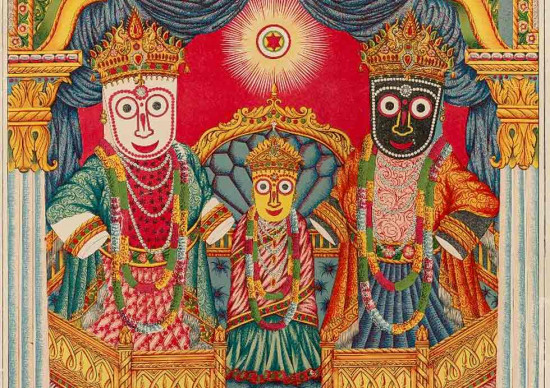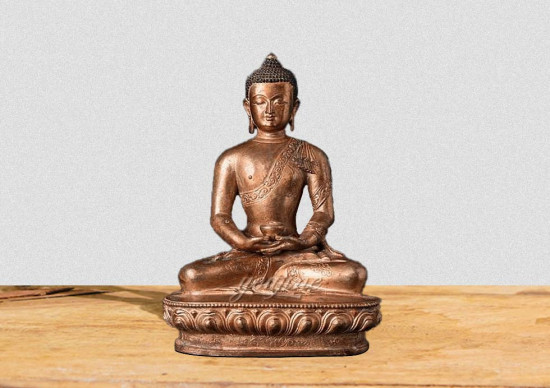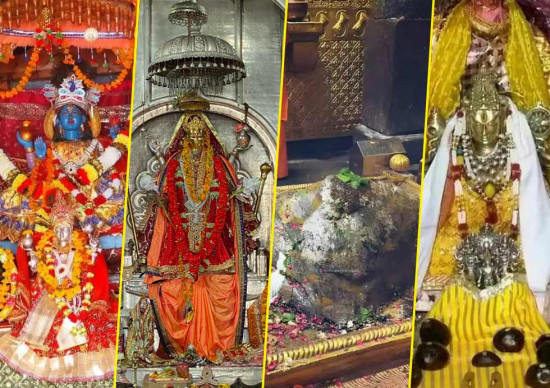Lord Vishnu, the eternal preserver of the universe in Hindu belief, is venerated for his divine role in upholding cosmic order. His divine essence manifests through various avatars, or incarnations, which he assumes to intervene in the mortal realm, restore dharma (righteousness), and vanquish evil. While many are familiar with the revered Dashavatara, the ten principal avatars of Vishnu, the Puranas reveal a more profound and extensive array of divine incarnations. This blog embarks on an exploration of the sacred tapestry of Lord Vishnu’s avatars, highlighting both the celebrated Dashavatara and additional divine forms as described in the ancient scriptures.
The Concept of Vishnu Avatars
In Hindu cosmology, Vishnu's avatars are manifestations through which he descends to Earth. Each avatar has a specific purpose, often tied to particular epochs (yugas) and crises in cosmic history. The avatars illustrate Vishnu’s commitment to preserving dharma and upholding righteousness. The most famous of these are the ten principal avatars, known as Dashavatara, but there are several others described in various texts.
Dashavatara: The Ten Avatars Of Lord Vishnu
Matsya Avatara
This is the first avatara of Lord Vihsnu he took in Satya Yuga. In the Matsya avatar, Lord Vishnu took the form of a colossal fish to protect the sage Manu and the remnants of humanity from a catastrophic deluge that threatened to annihilate all life. As the floodwaters rose, Vishnu guided Manu's boat, which carried the seeds of all life and sacred knowledge, to safety. This divine intervention not only ensured the survival of humanity and the natural world but also preserved the eternal wisdom needed for the continuation of dharma and the restoration of cosmic order. Through Matsya, Vishnu exemplified his role as the savior and protector during times of profound crisis.
Kurma Avatara
In his second avatar, Kurma, Lord Vishnu took the form of a mighty tortoise to play a crucial role in the churning of the ocean, known as Samudra Manthan. When the gods and demons sought to churn the ocean to obtain the nectar of immortality (amrita) and various divine treasures, they used Mount Mandara as the churning rod and the serpent Vasuki as the rope. However, the mountain began to sink into the ocean due to the immense strain. To support the mountain and ensure the success of this divine endeavor, Vishnu manifested as a colossal tortoise, anchoring Mount Mandara on his back. This act of divine intervention not only stabilized the mountain but also facilitated the churning process, ultimately leading to the emergence of the precious nectar and other divine artifacts. Through the Kurma avatar, Vishnu demonstrated his role as the unwavering support and stabilizer in moments of cosmic upheaval.
Varaha Avatara
Lord Varaha is the third avatara of Lord Vishnu. He manifested as a formidable boar to rescue the Earth, which was personified as the goddess Bhudevi. The demon Hiranyaksha had seized Bhudevi and submerged her in the cosmic ocean, plunging the world into darkness and chaos. To restore balance and save the Earth, Vishnu took on the form of a colossal boar, plunging into the depths of the ocean with immense strength. With his powerful tusks, Varaha lifted Bhudevi from the watery abyss and restored her to her rightful place. This act of divine intervention not only rescued the Earth from peril but also reestablished the natural order, highlighting Vishnu's role as the savior of both the physical world and cosmic harmony.
Narasimha Avatara
In his fourth avatar, Narasimha, Lord Vishnu appeared as a formidable half-man, half-lion to protect his devout follower Prahlada and to vanquish the demon Hiranyakashipu. Despite the demon's boon, which granted him immunity from being killed by man or beast, Hiranyakashipu terrorized the universe and threatened Prahlada, a devoted worshiper of Vishnu. To defeat the demon and safeguard his devotee, Vishnu manifested as Narasimha, a divine being that transcended the limitations of the boon. Emerging from a pillar at twilight, Narasimha tore apart Hiranyakashipu with his powerful claws, neither fully human nor fully beast, thus fulfilling his promise to restore cosmic order and uphold dharma. This avatar exemplifies Vishnu's ability to overcome seemingly insurmountable challenges and protect the faithful against all forms of malevolence.
Vamana Avatara
Vamana is the fifth avatar of Lord Vishnu. In this avatara he took the form of a humble dwarf Brahmin to confront the demon king Bali, who had usurped control over the three worlds and threatened the cosmic balance. Disguised as a modest Brahmin, Vishnu approached Bali and requested just three paces of land. Bali, renowned for his generosity, granted the request without hesitation. In a miraculous transformation, Vamana expanded to a colossal size, covering the entire universe in three steps. With one step, he covered the Earth; with the second, the heavens; and with the third, he stepped into the netherworld, thus reclaiming the realms for the gods. Through this incarnation, Vishnu demonstrated his divine power and restored cosmic equilibrium, illustrating that even the smallest request can lead to the most profound outcomes when guided by divine purpose.
Lord Parashurama
Parashurama is the sixth avatar. Lord Vishnu manifested as a Brahmin warrior wielding a mighty axe. This incarnation was driven by the need to address the rampant corruption and tyranny among the Kshatriya rulers, who had strayed from the path of righteousness and abused their power. Parashurama, whose name means "Rama with the axe," embarked on a mission to rid the world of these corrupt rulers. Armed with his divine axe, he engaged in a relentless campaign to restore justice and order, culminating in the elimination of the oppressive Kshatriya dynasties. Through this avatar, Vishnu demonstrated his commitment to upholding dharma by intervening directly to rectify moral and societal imbalances, ensuring that righteousness prevails over unrighteousness.
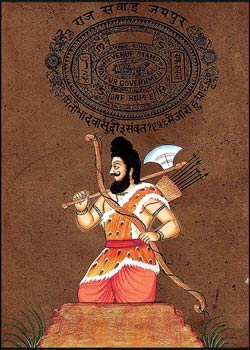
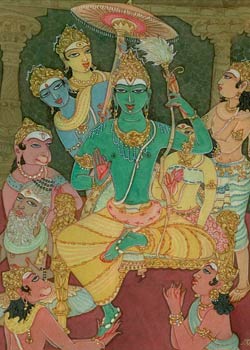
Maryada Purushottam Rama
In his seventh avatar, Rama, Lord Vishnu graced the world as the noble Prince of Ayodhya and the central hero of the epic Ramayana. Revered for his embodiment of virtue and righteousness, Rama's life serves as the ultimate example of dharma in action. His story unfolds with the noble quest to rescue his beloved wife, Sita, from the clutches of the demon king Ravana. Rama's unwavering devotion to justice, his valor in battle, and his adherence to duty exemplify divine principles of honor and morality. Through his heroic deeds and profound struggles, Rama illustrates the eternal truth of righteousness, showing that even in the face of formidable adversaries and dire circumstances, the path of virtue and devotion leads to ultimate triumph and divine grace.
Krishna
In his eighth avatar, Krishna, Lord Vishnu manifested as the divine cowherd and a central figure in the Mahabharata and the Bhagavad Gita. Renowned for his divine playfulness and profound wisdom, Krishna's life and teachings are pivotal to Hindu devotion. As the charioteer to the warrior Arjuna, he imparted the sacred teachings of the Bhagavad Gita, guiding him through moral dilemmas and the complexities of duty. Krishna’s childhood exploits, his divine leelas (playful acts), and his crucial role in the epic Kurukshetra War highlight his multifaceted nature and enduring influence. Through his divine presence and teachings, Krishna exemplifies the essence of dharma and devotion, embodying both the playful and profound aspects of the divine.


Buddha
Lord Vishnu took the ninth avatar as Buddha. Lord Vishnu is revered as Siddhartha Gautama, the historical Buddha. In certain traditions, this divine incarnation emerged to guide humanity towards spiritual enlightenment and liberation. Buddha’s teachings emphasized the path of inner awakening over ritualistic practices, advocating for a profound understanding of the self and the nature of suffering. By introducing the principles of the Four Noble Truths and the Eightfold Path, Buddha sought to liberate beings from the cycles of birth and rebirth and to lead them towards a state of Nirvana. Through this avatar, Vishnu underscored the importance of personal spiritual growth and the pursuit of wisdom, offering a path of peace and inner transformation.
Kalki
In his future avatar, Kalki, Lord Vishnu is prophesied to appear at the end of the current age of Kali Yuga to restore righteousness and vanquish evil. According to the Kalki Purana, this avatar will emerge from the village of Shambhala, born to a Brahmin family. Kalki is envisioned as a warrior on a white horse, wielding a sword to rid the world of the corruption and degradation that have pervaded the age. This divine intervention will mark the end of the Kali Yuga and usher in a new era of truth and virtue, reaffirming the cyclical nature of time in Hindu cosmology. Through Kalki, Vishnu will fulfill his promise to restore cosmic order and renew the world, highlighting the eternal rhythm of divine intervention and cosmic renewal.

Conclusion
The divine incarnations of Lord Vishnu, spanning the revered Dashavatara and beyond, offer a profound tapestry of divine intervention and cosmic restoration. Each avatar, whether the primal Matsya or the future Kalki, embodies a unique facet of Vishnu's commitment to preserving dharma and upholding the natural order. These incarnations not only address the specific crises of their respective eras but also convey timeless truths about righteousness, justice, and the interplay between the divine and mortal realms.
From the heroic acts of Rama and Krishna to the spiritual teachings of Buddha and the impending promise of Kalki, Vishnu's avatars provide a dynamic lens through which we can understand the divine's ongoing relationship with the world. Beyond the celebrated Dashavatara, additional avatars like Dhanvantari, Hayagriva, and Mohini further illustrate Vishnu’s diverse roles as healer, restorer of sacred knowledge, and dispenser of divine wisdom.
In essence, the multitude of Vishnu’s avatars reflects a divine strategy of continuous engagement with the world, ensuring that cosmic balance is maintained and that the principles of righteousness are upheld across ages. These incarnations remind us of the eternal nature of divine intervention and the cyclical rhythm of cosmic renewal, reinforcing the belief that the divine is ever-present and actively guiding the universe towards harmony and enlightenment.



